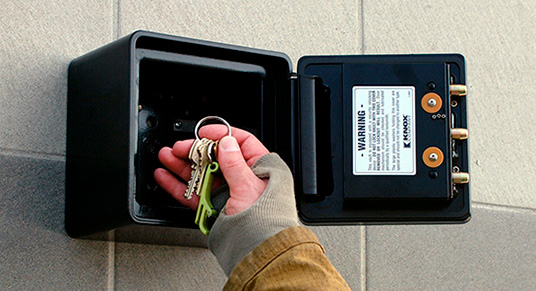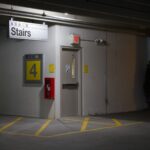 I read an article yesterday in USA Today: Locked electronic doors slowed police response in Virginia Beach mass shooting. As most of you know by now, last week a public works employee entered the Virginia Beach municipal building where he had worked as an engineer for 15 years, killed 12 people, and wounded 4 others. At this point, his motive is unknown.
I read an article yesterday in USA Today: Locked electronic doors slowed police response in Virginia Beach mass shooting. As most of you know by now, last week a public works employee entered the Virginia Beach municipal building where he had worked as an engineer for 15 years, killed 12 people, and wounded 4 others. At this point, his motive is unknown.
One thing we do know is that during the police response there were several times when law enforcement officers were heard on the radio requesting keys, access cards, or breaching tools in order to reach the suspect as well as the victims. The same locks that were intended to secure the building and limit access to intruders increased the response time of the emergency responders.
These difficulties underscore the importance of planning for authorized access to secured buildings and interior spaces. Searching for the keys, credentials, or special tools needed for access can delay emergency responders, as it did in Virginia Beach. We have seen the same effect in several school shootings where the doors were barricaded or chained and hindered law enforcement response (examples: Virginia Tech, Platte Canyon High School, West Nickel Mines Amish Schoolhouse).
Does this mean that doors should not be lockable? Of course it doesn’t! Locked doors are a crucial part of the physical security of a building, and automatically unlocking doors during an emergency for law enforcement access is not feasible for all buildings, and may create other problems.
As with classroom security, the answer is to make the necessary keys and access control credentials readily available to first responders – typically in a key box (often called a Knox Box – a brand name), usually mounted near the main entrance of the building. Some key boxes may also include a switch to unlock doors with electrified hardware rather than using the access control credentials for each individual door.
A key box is defined by the International Fire Code (IFC) as: A secure device with a lock operable only by a fire department master key, and containing building entry keys and other keys that may be required for access in an emergency. The IFC does not specify which buildings are required to have key boxes, but authorizes the fire code official to require a key box to be installed where access is restricted because of secured openings or where immediate access is necessary for life-saving or fire-fighting purposes. But how do fire code officials determine which buildings should have key boxes, when any building could be the location of a fire or other emergency?
The website for the city of Virginia Beach includes information regarding key boxes:
A Knox Box is a secure and mounted device that can hold keys, access cards, and full size binders of information for use by the Fire Department during afterhours emergency calls for service. Key boxes allow businesses to prevent or reduce damage to their structure by Fire Department personnel during calls for service and provide a means for Fire Department personnel to access secure areas quickly. Key boxes are only accessible by Fire Department personnel, not by police or other first responders. Knox box keys should be updated whenever any major building changes have occurred, if access controlled areas have been added, and if locks have been switched out on site.
Historically, keys and access control credentials in key boxes are used by firefighters for rapid access and so they don’t have to breach the door by force and cause unnecessary damage. According to the Virginia Beach information, the key boxes are only accessible by the fire department, and not by the police department. In many emergencies, both the police and fire department will be present, but in an active shooter incident it would likely be law enforcement officers who need to enter the building first.
Facility managers, along with the local fire and police departments, should consider how to allow rapid access to their buildings in an emergency, by making keys and access control credentials readily available to emergency responders. For many facilities, concerns about security may impact the use of a key box, but there are ways to mitigate those issues – refer to this article from Silva Consultants. There are videos, case studies, and additional information about key boxes available on the Knox website: knoxbox.com.
Photo: Knox Box
You need to login or register to bookmark/favorite this content.





We Knox box almost all our new buildings, even so called 24 hour occupied ones.
The police have become interested in entry just on a few situations.
They do not always have a Knox key, but can call fd to run with them and open a Knox device or activate a Knox device, either to get keys or override a security door.
I remember working on a project several years ago for the City of Marco Island, Florida where they required an 8.5 x 11 size site / floor plan of the building that showed where the knox box, fire alarm control panel, fire hydrants, PIV, etc were located. They included this in a binder on all the fire trucks so it could be looked up before they got there. I thought this was a great idea….sounds like something similar will be useful for the police now as well.
The other side of the ‘Knox Box’ coin:
https://www.bizjournals.com/austin/news/2018/01/10/security-of-6-000-buildings-in-austin-compromised.html
I hear you, but there has to be some way to ensure security and access.
– Lori
As a security consultant I am not a big fan of these boxes. Key boxes are fraught with unintended consequences. This follows the same rule of unintended consequences as the barricade devices. I did a web search on “Knox Box burglaries” and got 676,000 hits. Here is one from Seattle. What level of access do you provide from these boxes? A GGM? A perimeter door key? A card with master level access? If you’re in a mall or tenant facility, does the key fit all the stakeholder doors as well as the perimeter doors? Who do you give access to? Typically firemen.. but what about police, and who in the PD should have this key? Same for other emergency services (i.e. EMS). This is just like giving master keys to thousands of people you don’t know and cannot control. Most FDs have a single key that access thousands of these boxes. I can duplicate most keys in minutes, even the high security version. I can also bust the box off the wall and simply decode the lock. Do you think the City will actually understand the significance of a box that disappeared… even if the incident is reported? Building managers likewise have little understanding of such security nuances. What is the liability you have to stakeholders if you don’t report a problem or change the key combination? When you found your key box missing did you take action? If you’re the fire department, do you change combinations to thousands of such boxes or at least notify the citizenry that you screwed up?
If you do install these boxes, insure they are installed correctly. When I do put them in, I personally specify where they go and inspect the installation prior to approval. 2 out of five times, they are installed not to manufacturer’s specifications. I have found two sites where they were installed with plastic anchors. In one of the sites I literarily knocked it off with my hand (aka Kung fu master).
You have to be very specific where these things are mounted. Use a flush mount version; even if it means chipping out the brick. The surface mount object is ripe for a 10 point sledge hammer. Locate the box in a highly visible location high on the wall such that one has to reach up to use it. Make sure the space is well lit.. possibly with motion detector lights. You can also purchase the box with a tamper switch and connect it to a 24 hr circuit of an IDS system or a simple local alarm which would detect any opening or simple smashing off the wall. A camera would also be a good add.
Limit what you put inside the box. One or two exterior doors and interior passage doors necessary to access the corridors …. Above all, no master keys. Cards are better; but if you system is not well designed you will need an override key.
Here is one solution that would seem to provide an effective solution. You unlock the door by keying your push to talk button on your radio. Any frequency can be programmed into the system, including security or event staff, EMS, PDs or FDs. This allows entry to the first door, then you mount your much beloved Knox Box inside the building… say next to the fire alarm panel. I have this product specified for one client on a gate. I will let you know how it works out.
Please don’t see this a diatribe against the Knox Box itself. It’s a very good, well tested product. All of my issues are with those who legislate, install and use these products.
At least one county in Central Maryland uses tone coded release for Knox boxes – Fire and Police request Knox release upon arrival – Dispatch sends a tone encoded signal to open the box – same system used to alert stations/personnel for for calls. NO Keys involved.
I agree in concept that law enforcement should have access to “Knox Boxes”, but giving the police direct access to private premises can raise Fourth Amendment issues. Providing Knox Box keys in every law enforcement vehicle also greatly increases the total number of keys in circulation, increasing the likelihood that a key will be lost.
I have written a short article on the vulnerabilities of fire department key boxes on my website: http://www.silvaconsultants.com/security-vulnerabilities-created-by-fire-department-key-boxes.html This article echos many of the points made by Mr. Elder.
One of the cities that I am working with is beta testing a new computer-based “Knox Box” system that eliminates many of the vulnerabilities associated with the present system. Special terminals are installed in the fire vehicles. Fire fighters must enter a special pin code in this terminal, which releases an electronic key that opens the key box at the specific premises where the call is at. This key automatically expires after a predetermined time period, requiring re-authorization before it can be used again. A record is kept showing every time an an electronic key is used and by who. Using this type of system could alleviate some of the concerns about giving law enforcement access to the key boxes.
Thanks for sharing this Mike! I will add a link to your article in the blog post.
– Lori
when I ran my own retail lock shop I all ways sold a key for the knox box until I had some call backs for more lock work and was informed that the fire department never came out to replace the keys, multiple departments. Police should have breaching tools on hand. shot gun can work in many places.
Some of the things we are doing here on campus is making all new Knox Boxes monitored so that we know when they are accessed. They also have two keys, one for the fire department and one for our Fire Marshalls office. All exterior doors are getting electrified hardware, Any building less than 10 years old already has full perimeter electrified hardware. We have a key that only our University Police Department can have that will access doors with card readers or areas were we have electrified hardware and felt that emergency access should be made. We have a lot of buildings and hopefully will have 100% electrified hardware on all of them in the next few years.
In the old days a thief just jiggled doors, till they found an open one, or broke a window, or did some homework and watched a place for patterns.
Yes the first police on scene normally do not carry forcible entry tools. Even if a building had a Knox box, they would have to know where it is at and take the time to open it…. meanwhile shots are being fired.
They are in a no win position.
Ask and you shall receive ::
https://www.knoxbox.com/store/files/Knox-eLock-System-Brochure.pdf?utm_campaign=Product%20Launches&utm_source=hs_email&utm_medium=email&utm_content=73241098&_hsenc=p2ANqtz-_aLtLxPZXOMYUB74_Qvn__xXeNv4oPQpOAAWkNvXM7J35v4eUWHfEnCt5zZgHraDh5-tQgpnO5wQLF19i9tWcJbRpU2A&_hsmi=73241098
Thanks Charles!
– Lori